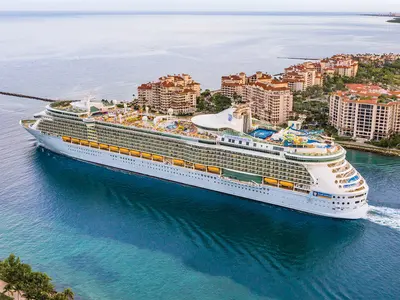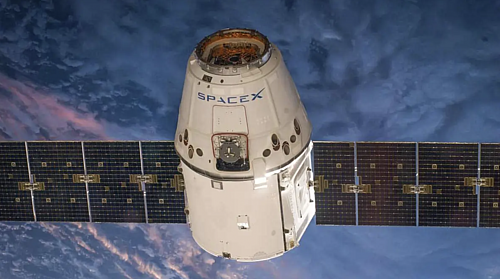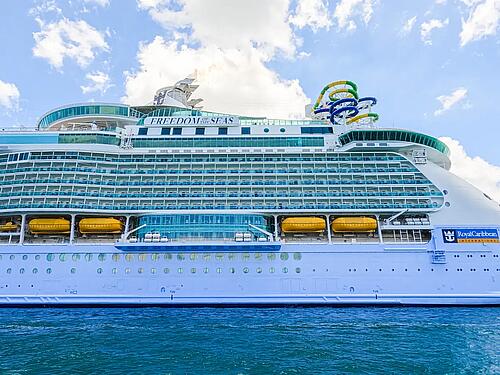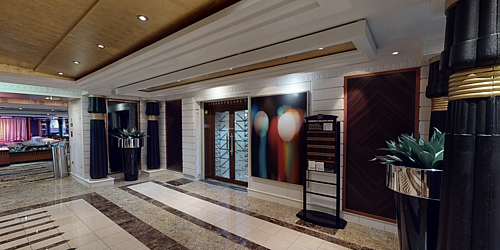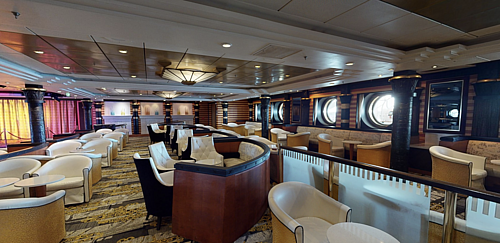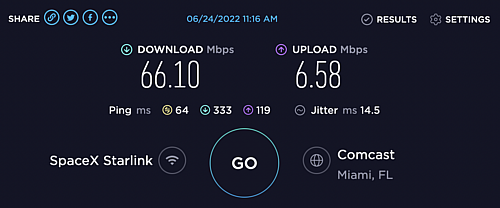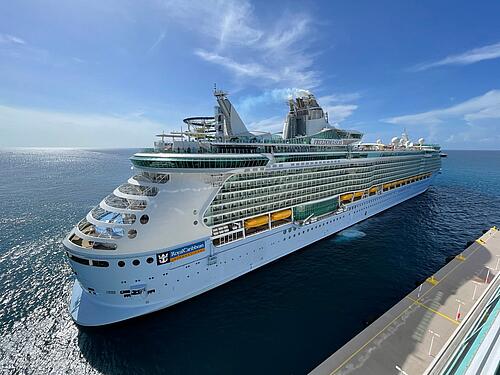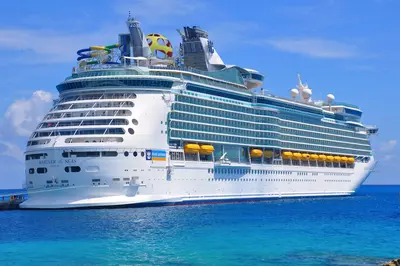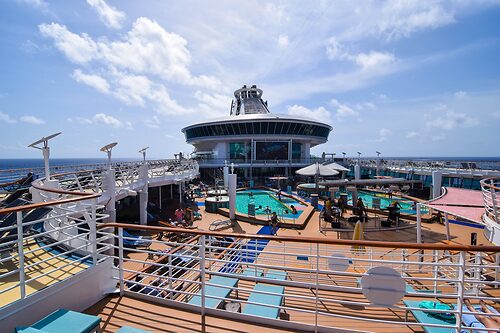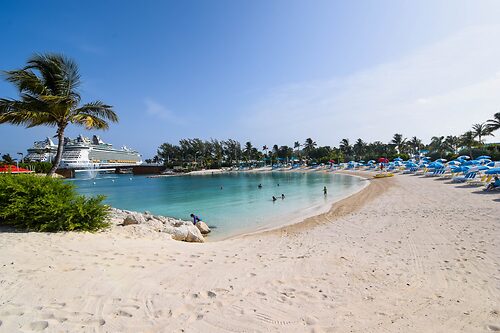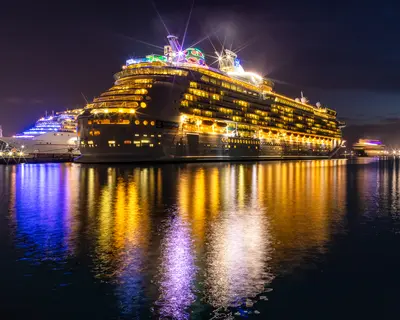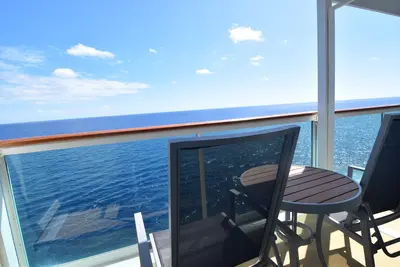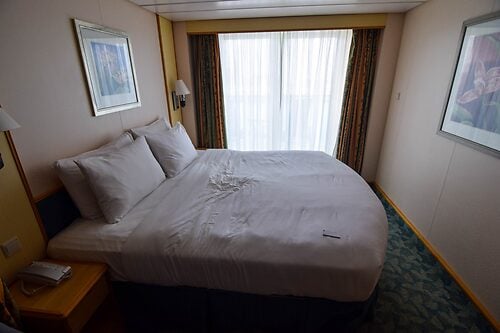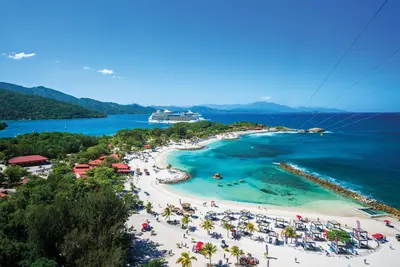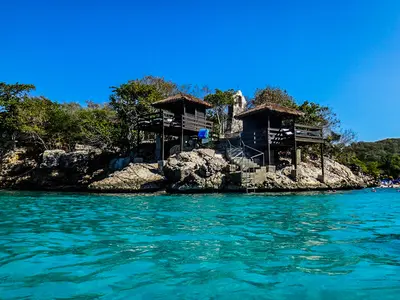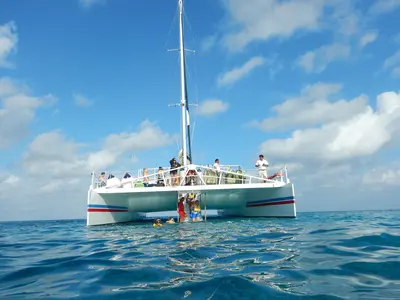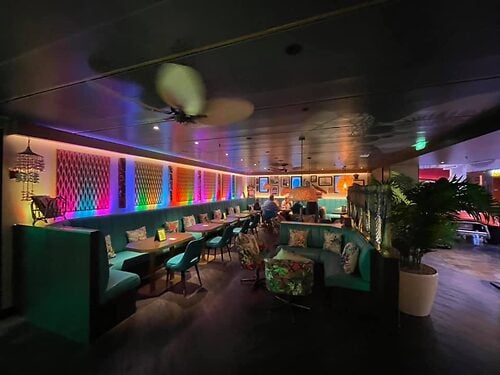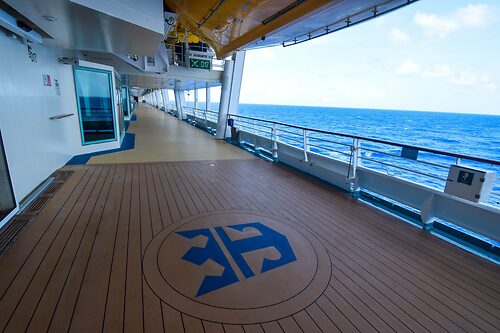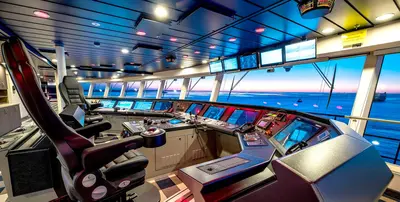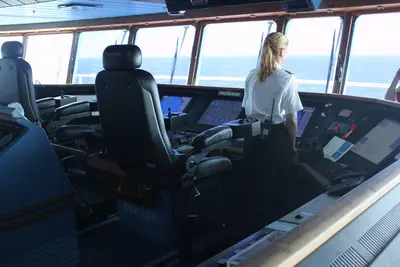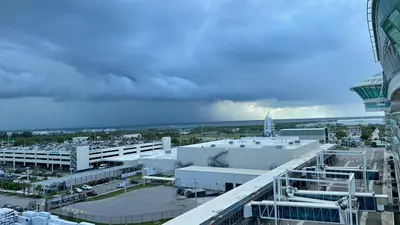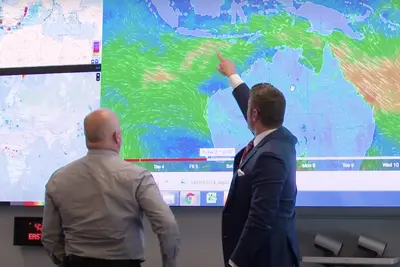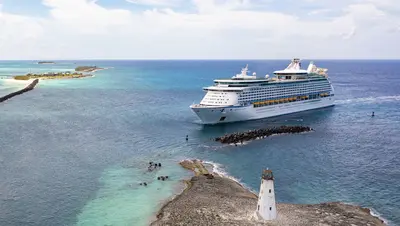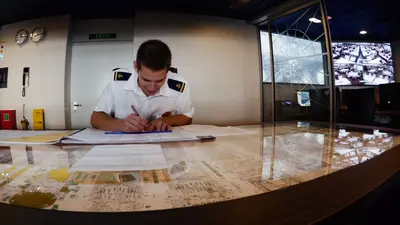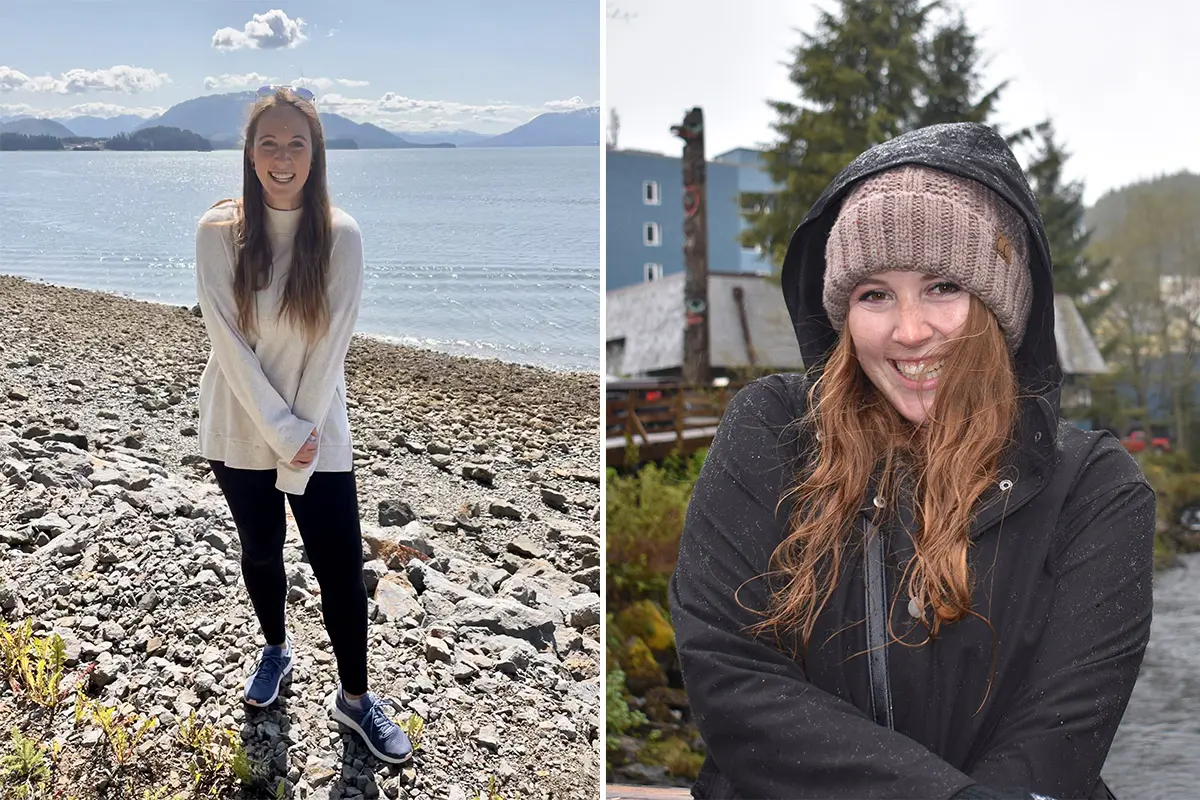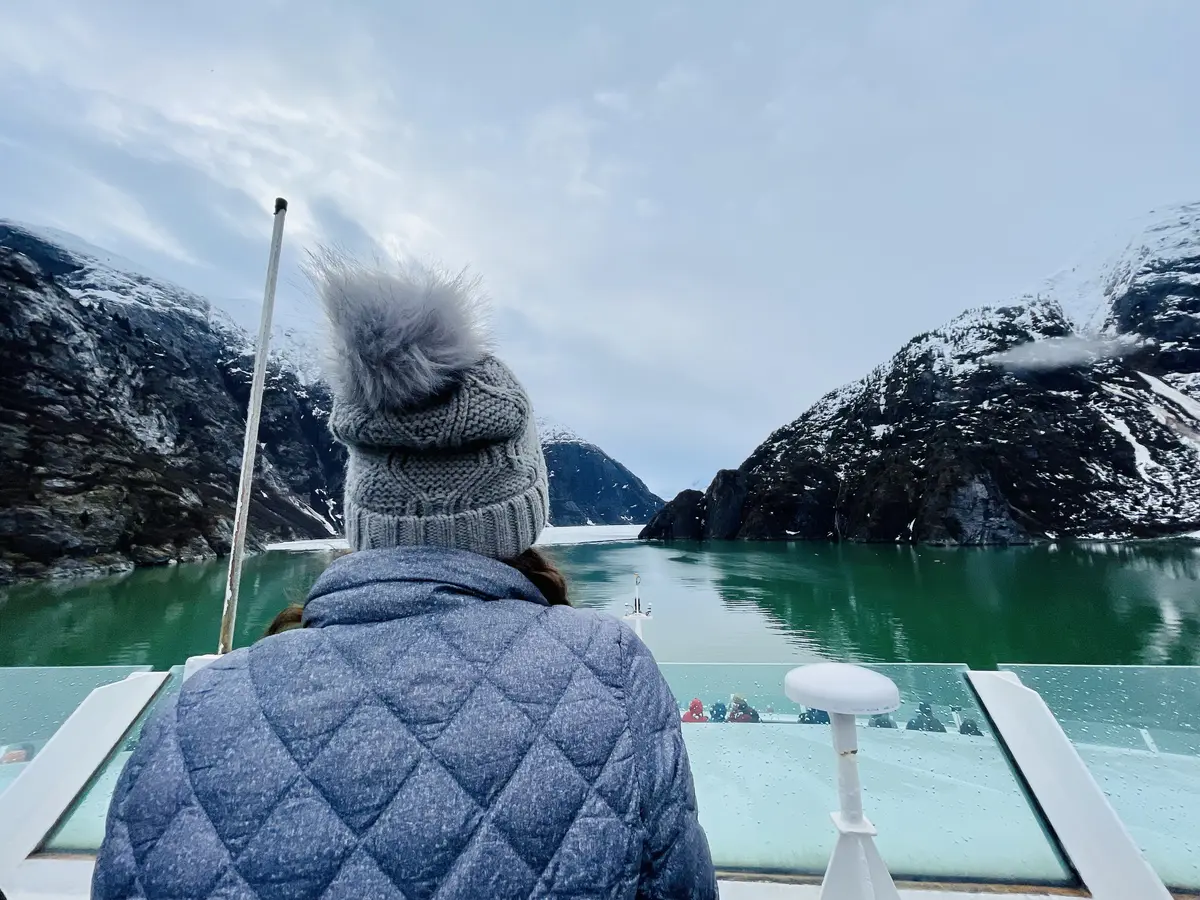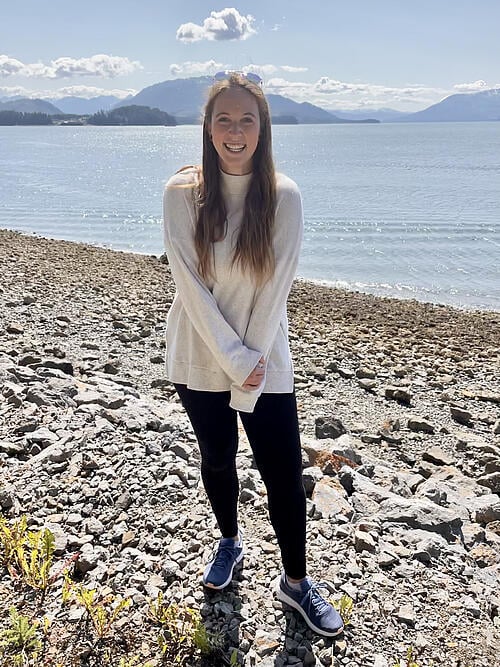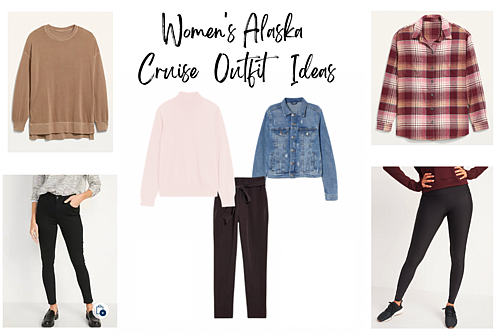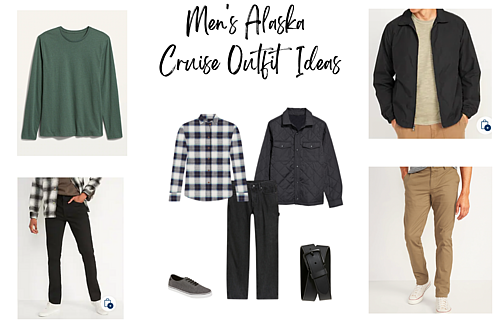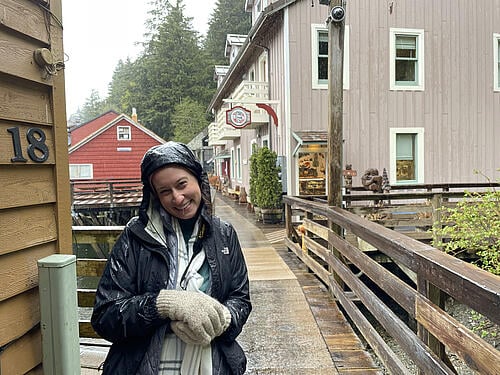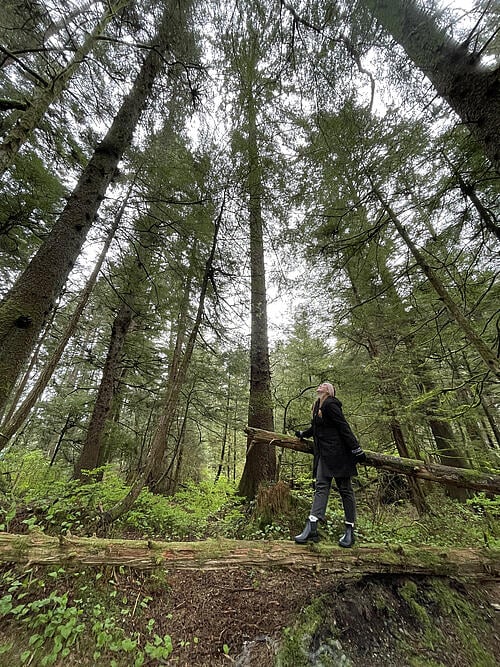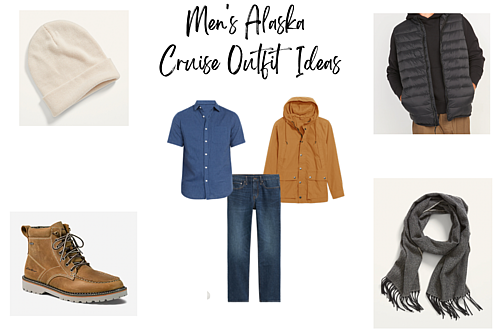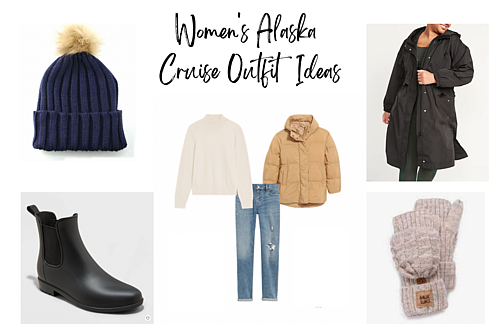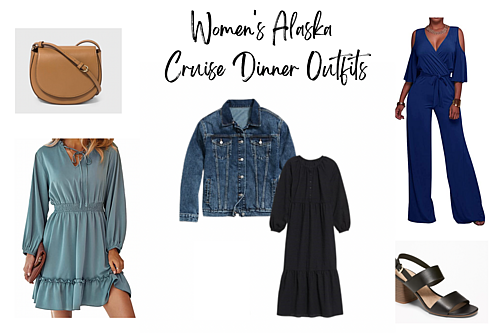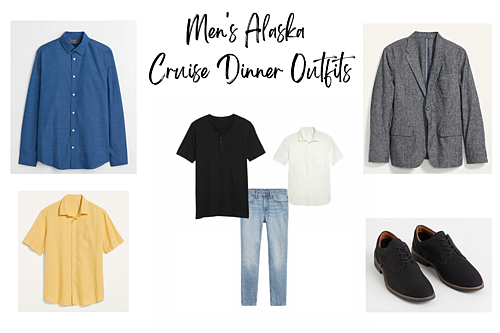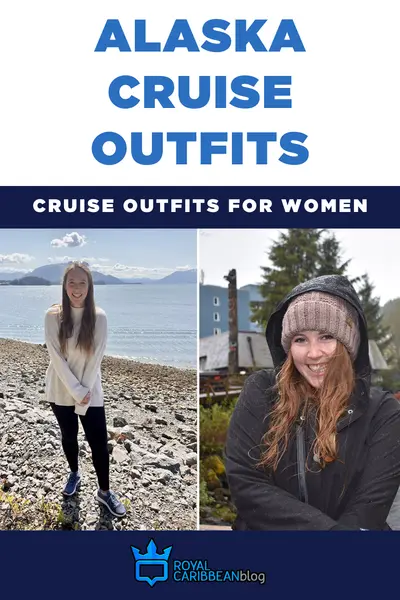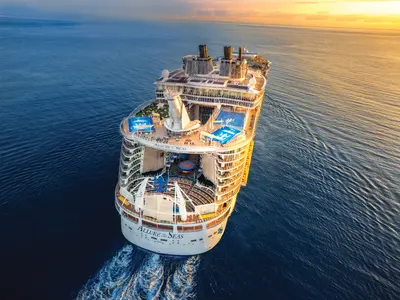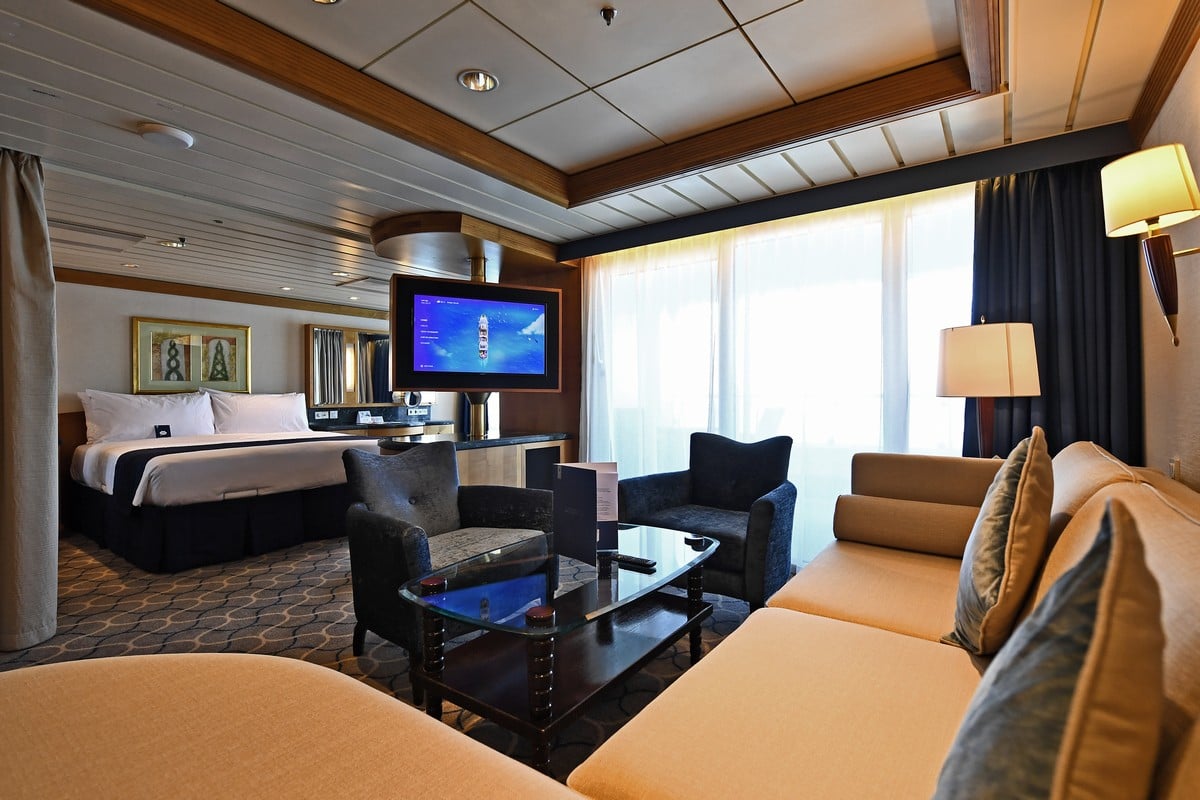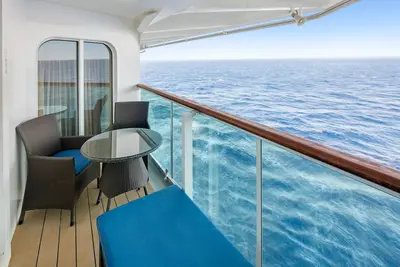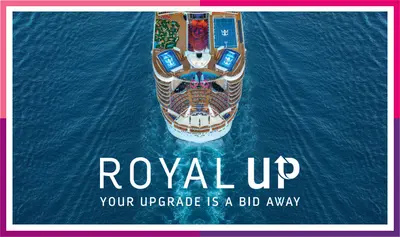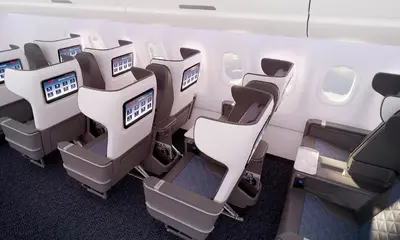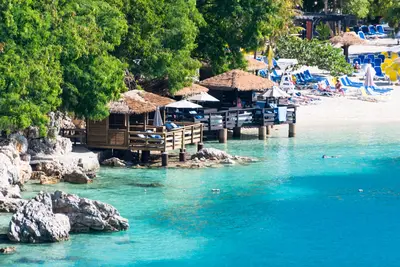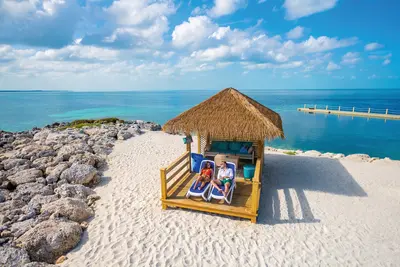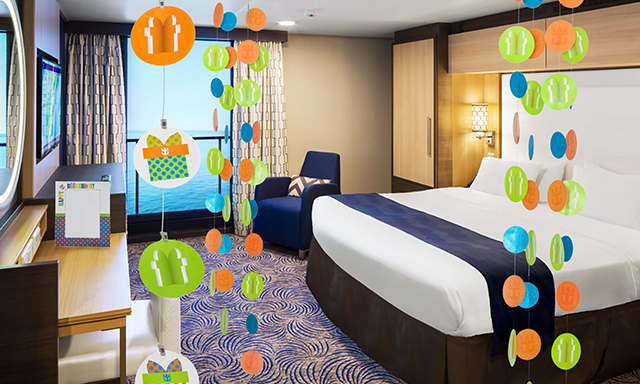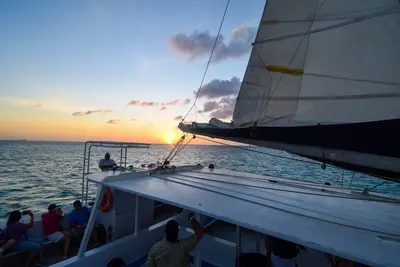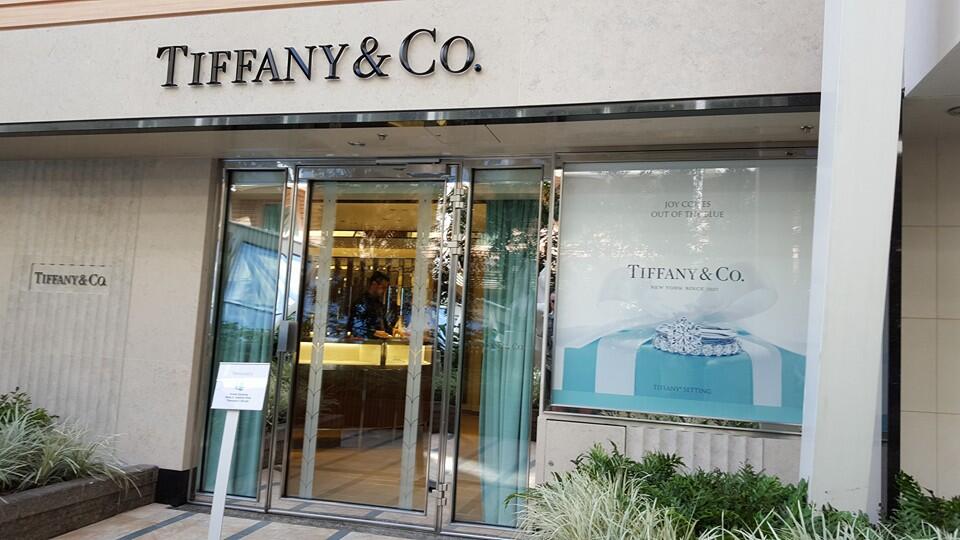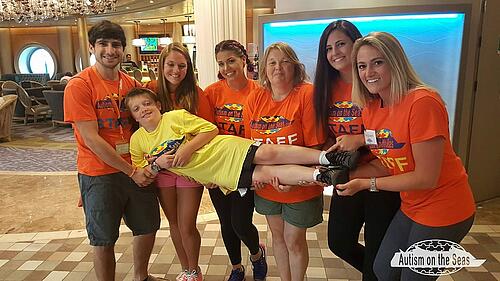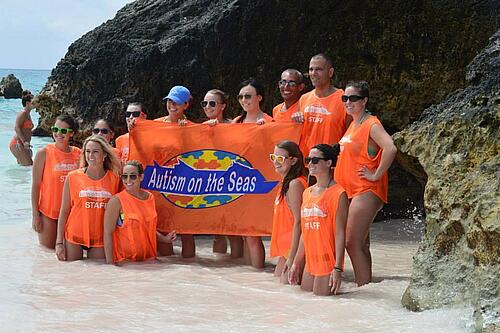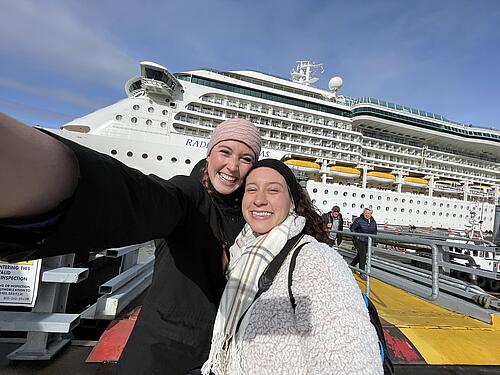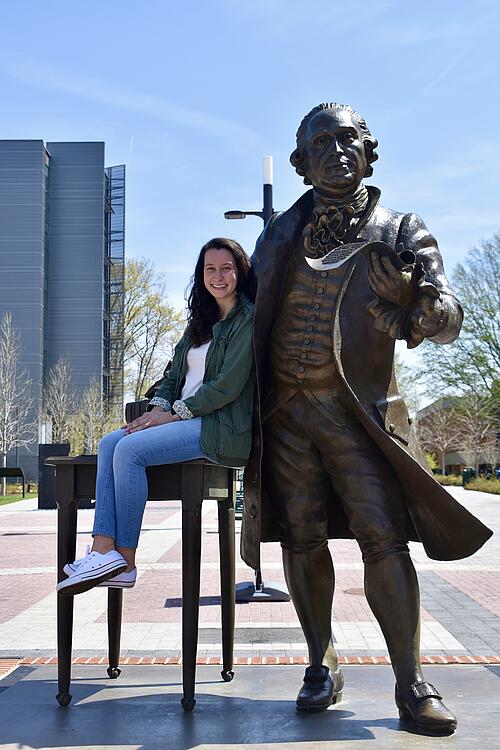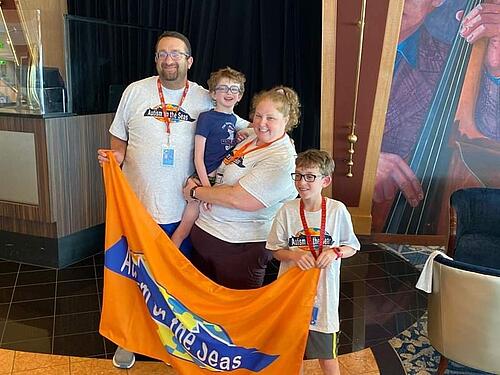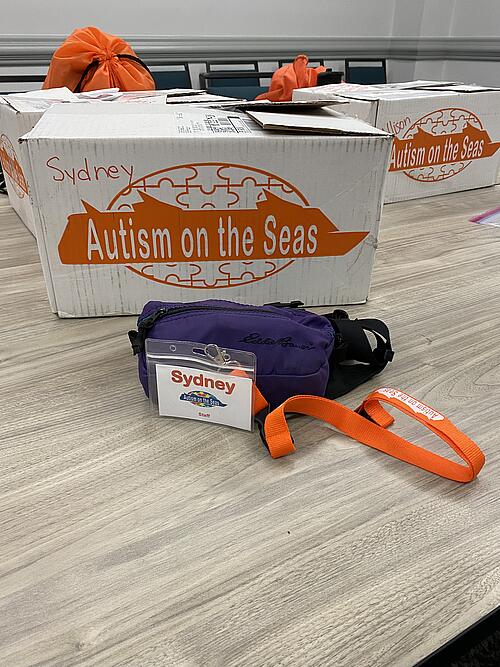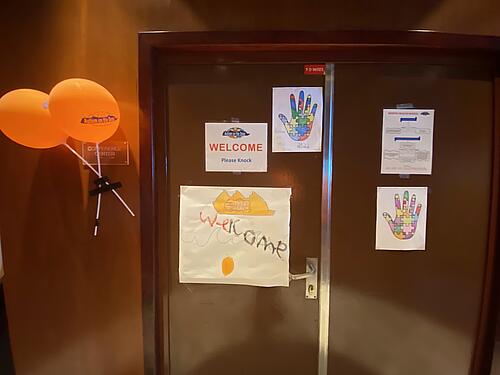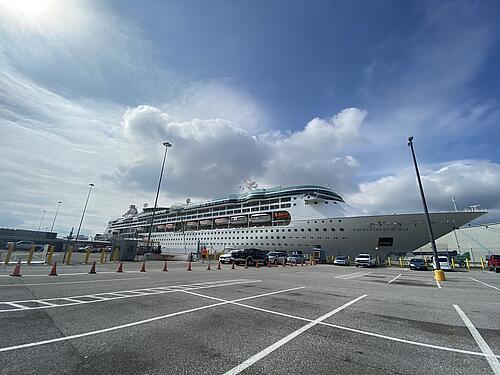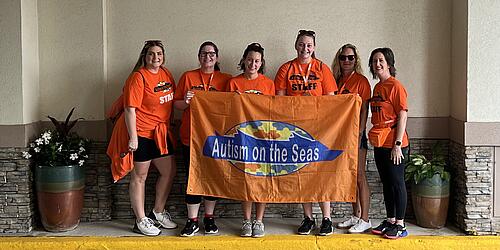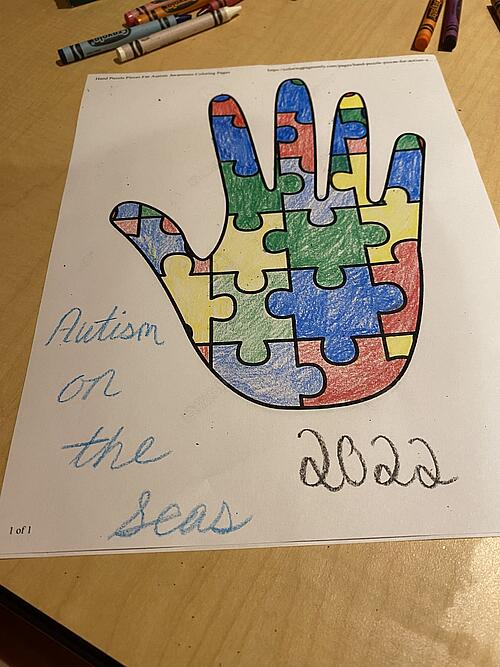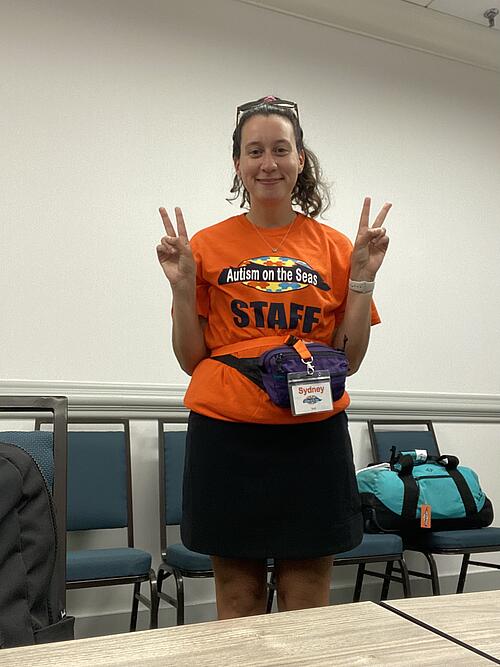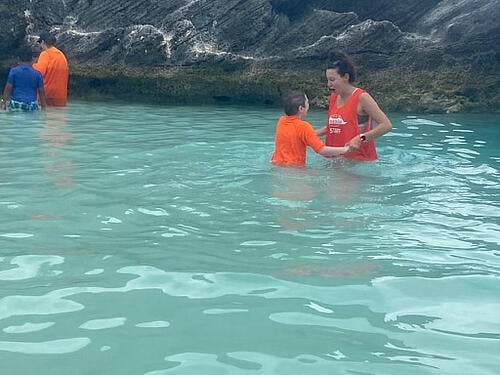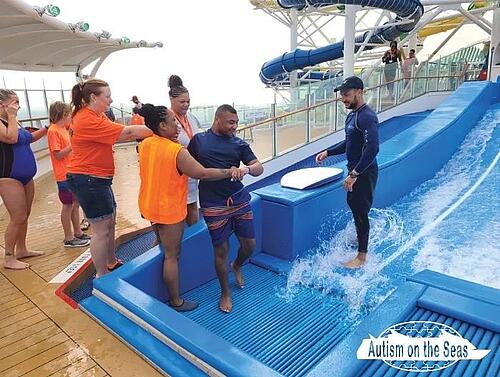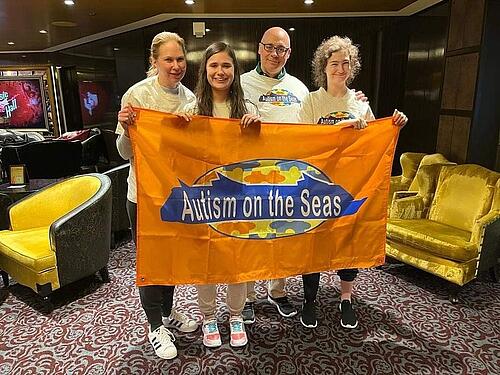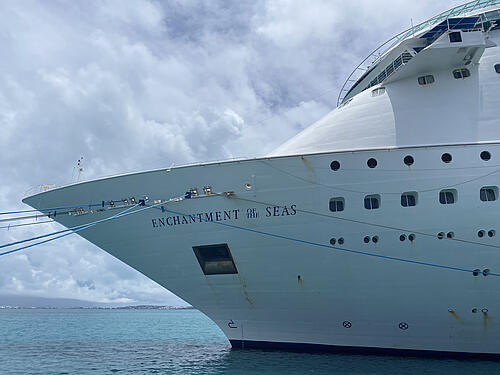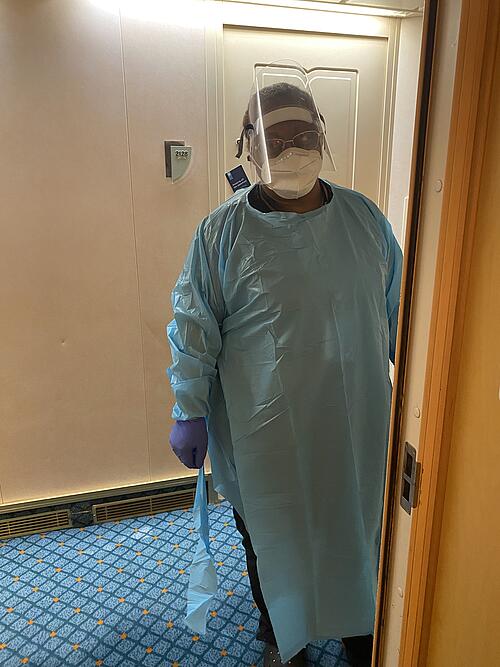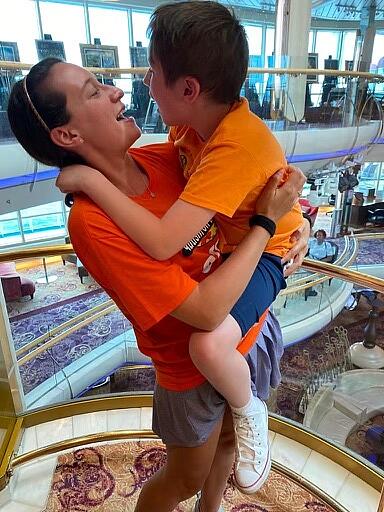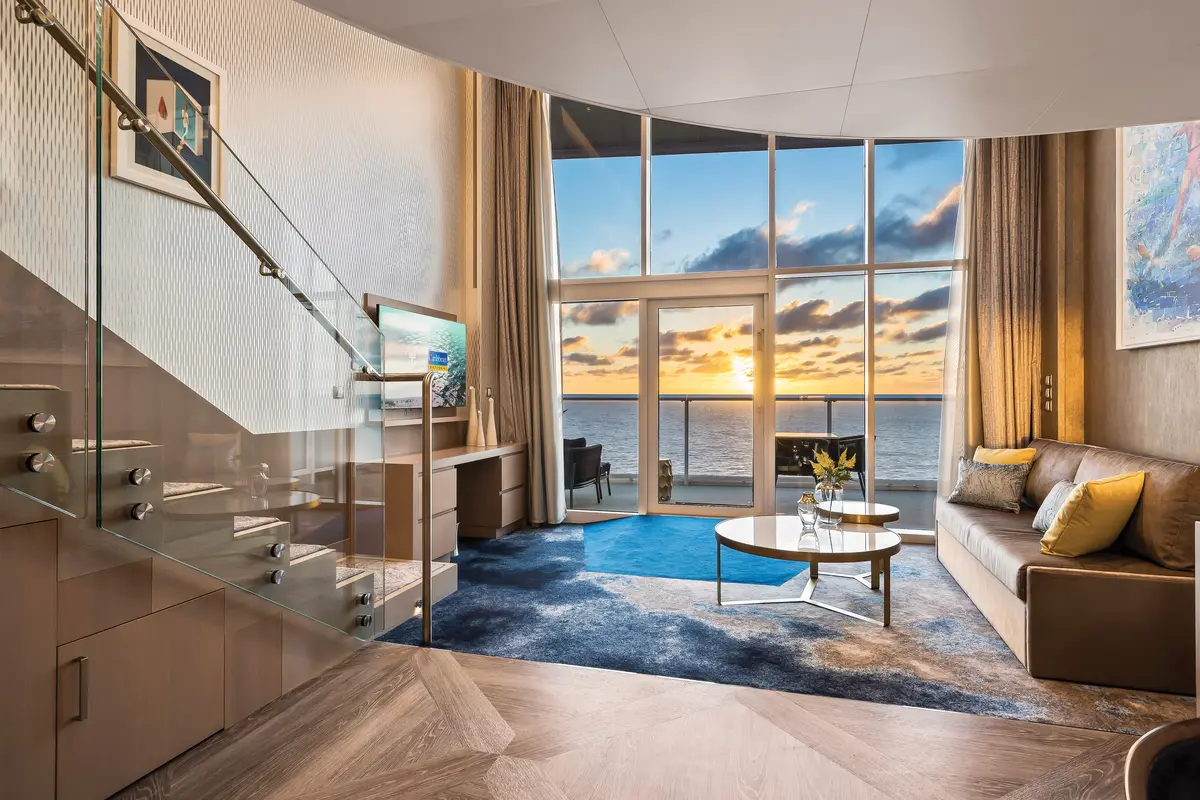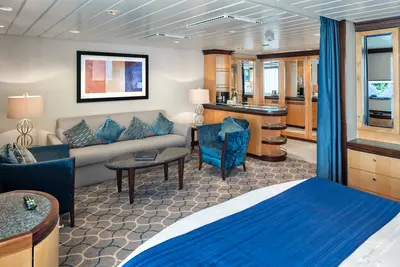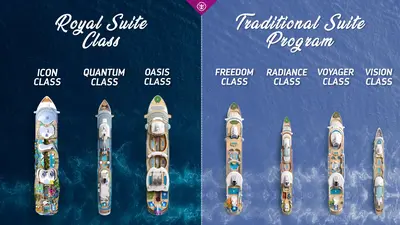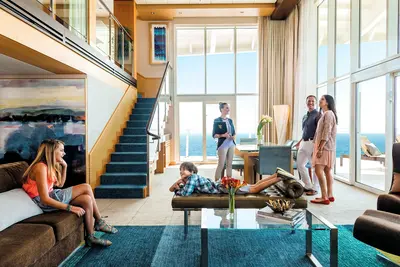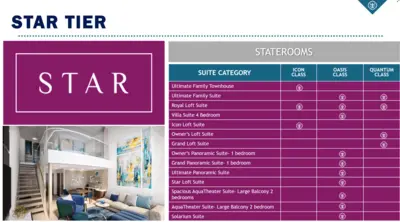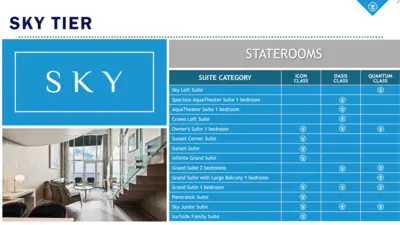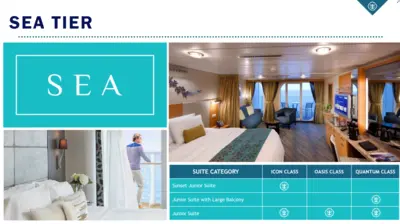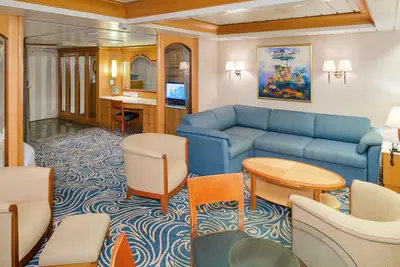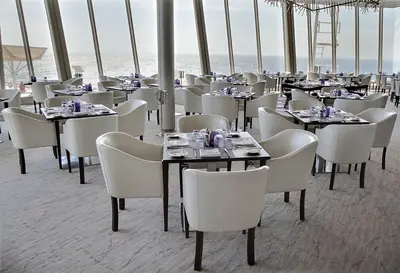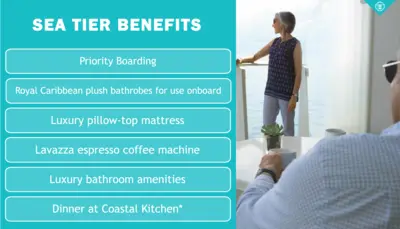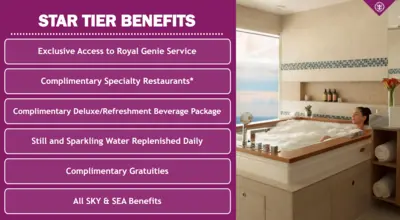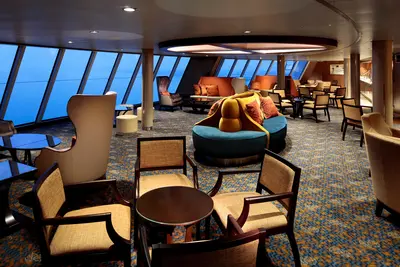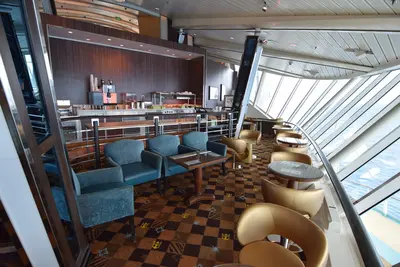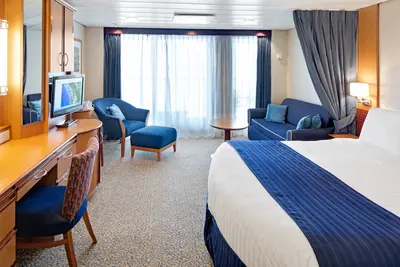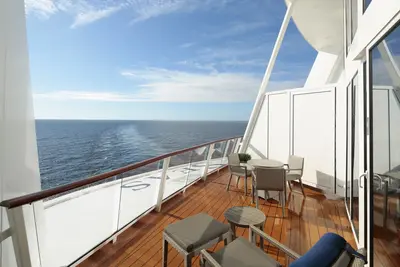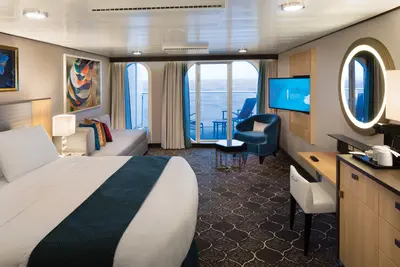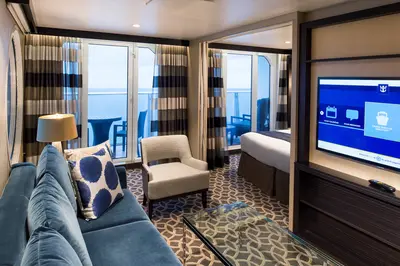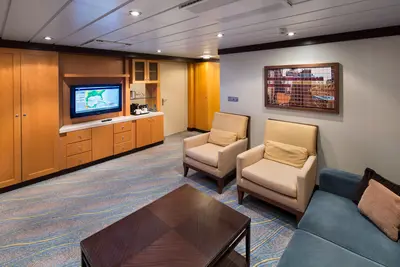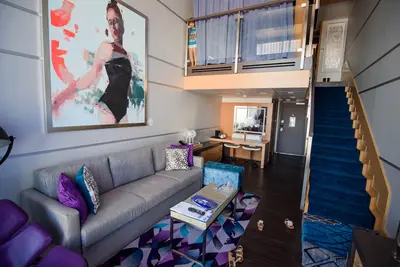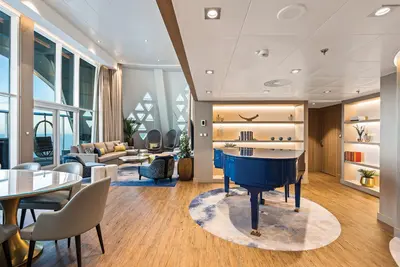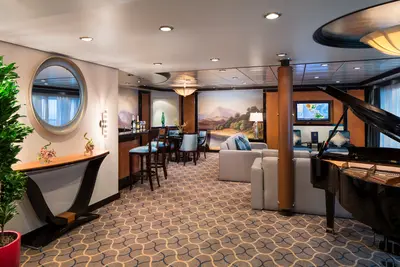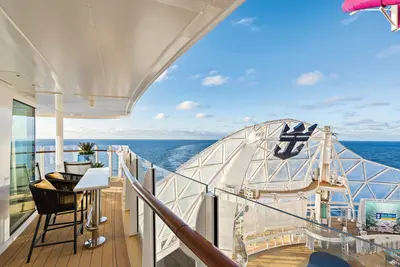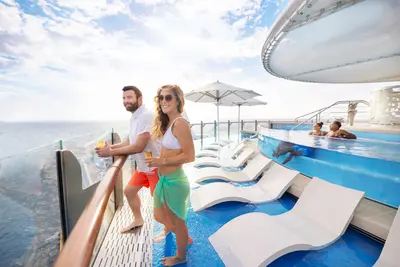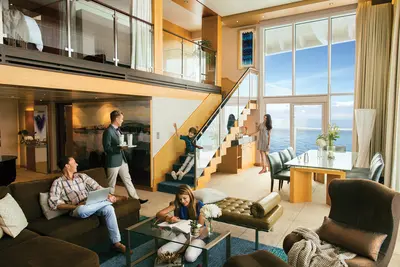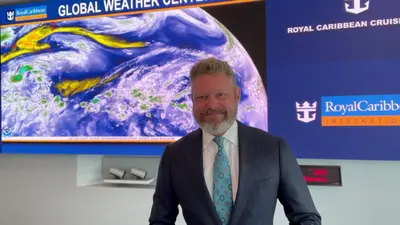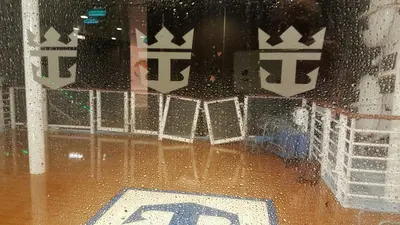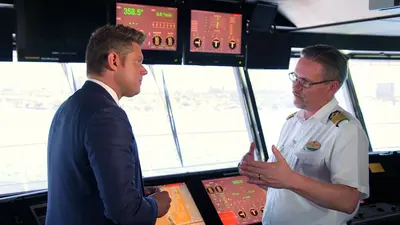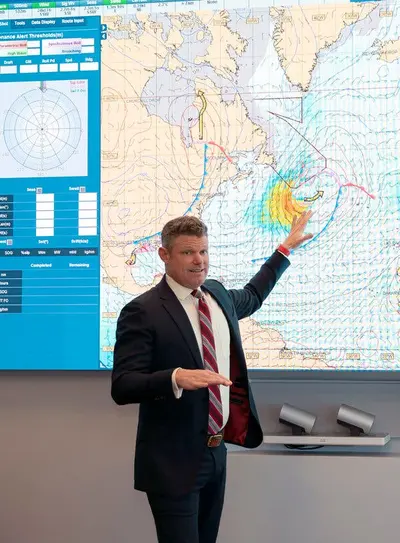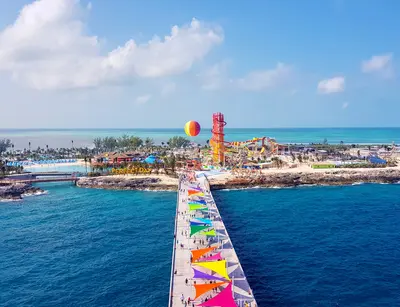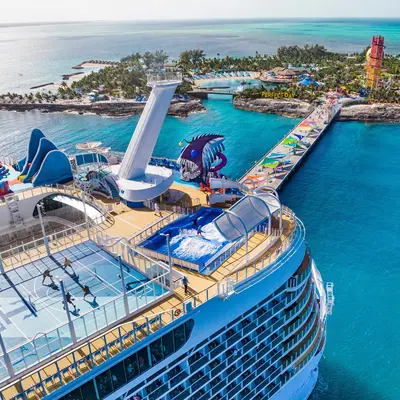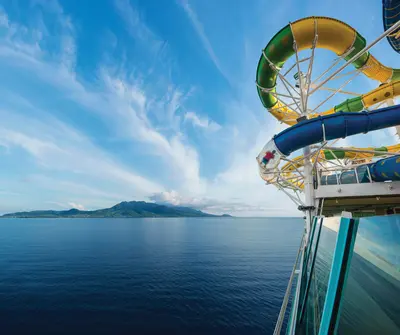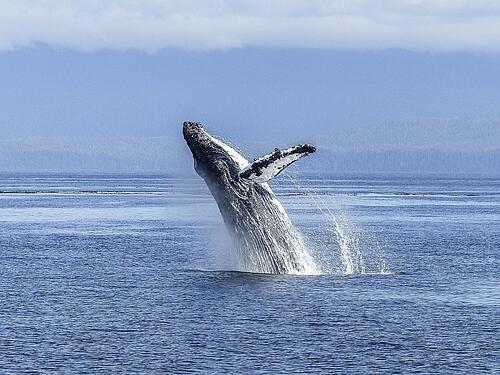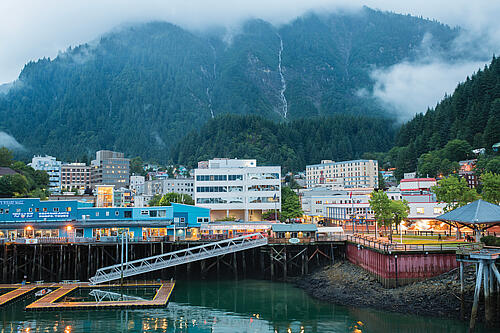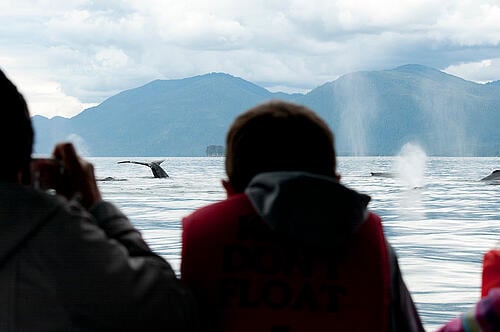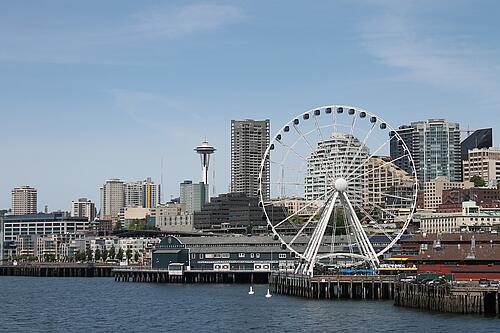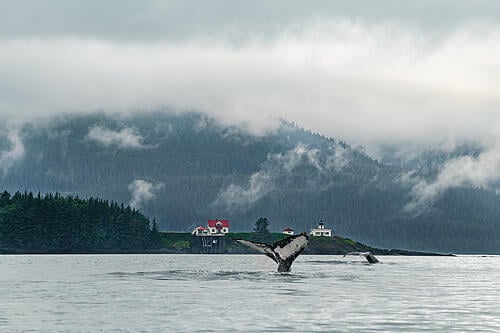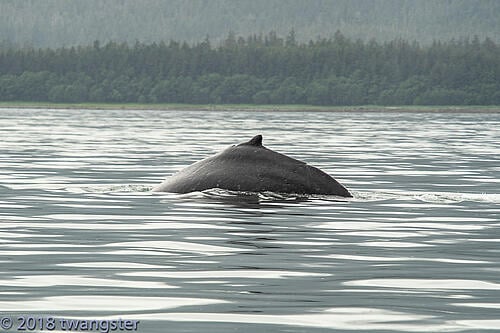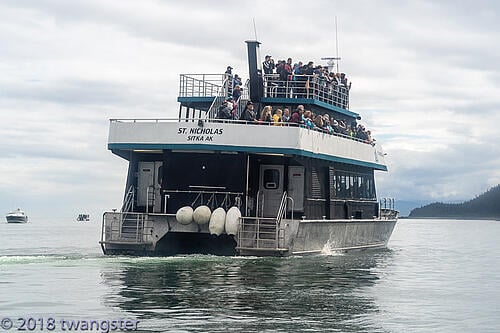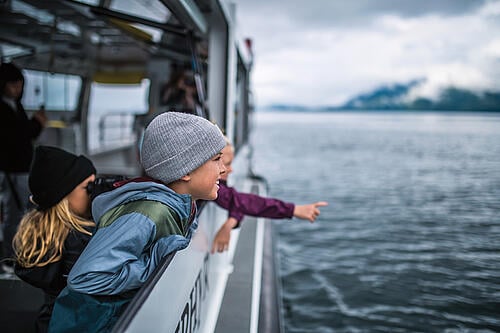Royal Caribbean's suites are the top echelon of cruise ship cabins, and it includes many perks and benefits for booking one of these spacious staterooms.
Suites come in a few different sizes and layouts, but the common thread among them all is a cabin that provides the most space with the best amenities for guests onboard.
Royal Caribbean's suite program is not quite a "ship within a ship" concept that other lines have, but they do give their guests lots of extra attention and access other cruise ship passengers do not receive.
If you elect to try one of the bigger suites, you'll find palatial rooms with lots of living space. Some of these rooms even encompass two levels.
Suites are one of the first type of cruise ship cabin to sell out on any sailing because of how limited they are and how many people value staying in a room that gets all those benefits.
If you think a suite might be in your future, here's what you should know about a suite cabin, what it includes, and what you get for spending all that money.
Suites on Royal Caribbean basics
While Royal Caribbean is not a luxury cruise line, it does offer very lavish suites on its ships, especially if you try one of the biggest suites on its newest ships.
The exact suite benefits depend on the type of ship you sail on. Essentially, there are two echelons of the suite program: the Royal Suite Class on Oasis Class, Quantum Class, and Icon Class ships, and then the suites on the rest of the fleet.
No matter which suite you book, you can expect access to a dedicated suite lounge, services of the suite concierge, reserved seating on the pool deck, double Crown and Anchor Society points per night of your cruise, and priority embarkation/disembarkation.
The exact benefits will be spelled out for you when you get onboard (as well as a week before the cruise in a welcome email from the suite concierge).
Something else you should know about suites is that they are only available with non-refundable deposits. This means if you were to change your mind later and cancel a reservation before the final payment date, you'd lose your entire deposit.
Royal Suite Class
Royal Caribbean wanted to enhance the suite program on its newer ships, so they created a top-level experience, especially compared to land-based suite offerings.
The result is the Royal Suite Class, which categorizes suites into three tiers, each with its own set of benefits.
At the top is the Star Class, which not only encompasses the largest cabins onboard, but also includes all the benefits of the other suites, plus the added bonus of including a drink package for everyone in the cabin, internet access, and their personalized attendant for the sailing, the Royal Genie.
Each Royal Genie is shared by just 3 or 4 suites and is a cross between the suite concierge, butler, and magic maker. They can attend to your every need onboard and reserve seats at any show or restaurant without the need to plan ahead.
Read more: A beginner's guide to sailing in Star Class
As you probably guessed, Star Class is not cheap. Prices are almost always somewhere in the five figures, and some of the incredibly large suites can rival the price of a new car.
The people who tend to book these rooms are usually well-to-do guests who want personalized service aboard a ship that offers lots to do.
Read more: What is the most expensive suite on Royal Caribbean?
If the Star Class price tag isn't affordable, you'll find plenty of benefits in the next tier, Sky Class.
Sky Class is more in line with what you might find in any suite on any Royal Caribbean ship, but it also includes access to the suites-only restaurant Coastal Kitchen. Think of Coastal Kitchen as a main dining room for suite guests, with a rotating menu every day. Plus, it's open for breakfast, lunch, and dinner.
The primary benefits of Sky Class suites are complimentary internet access, suite lounge access, and Coastal Kitchen meals.
For those who book a junior suite, you'll be included in Sea Class, which does not include wi-fi or access to the suite lounge or concierge.
Junior suite guests can dine in Coastal Kitchen but only for dinner, subject to availibility.
Suites on the rest of the fleet
If you book a suite that isn't on an Oasis Class, Quantum Class, or Icon Class ship, the experience is a bit more standardized.
Royal Caribbean opted not to expand the Royal Suite Class to older ships simply because those ships wouldn't be able to include the same amount of benefits found on the bigger ships. So they decided to keep the suite experience intact.
Don't take that to be a negative to staying in a suite on a non-Royal Suite Class ship. You'll still get the core suite experience, which includes:
- Double loyalty points
- Access to the Suite Lounge
- Services of the suite concierge
- Complimentary alcoholic beverages in the evening while in the suite lounge
- Priority embarkation and disembarkation
Suite benefits

Naturally, you'll want to know exactly what sort of suite perks you'll get during your stay.
Here's a breakdown based on Royal Suite Class and the rest of the fleet.
Read more: How to maximize the value of a cruise ship suite
Royal Suite Class
Sea Class
- Dinner at Coastal Kitchen
- Royal Caribbean Plush Bathrobes for Use Onboard
- Luxury Pillow Top Mattress
- Luxury Bathroom Amenities
- Lavazza Espresso Coffee Machine
Sky Class
- Concierge Service
- All-Day Access to Coastal Kitchen
- Specialty Bottled Water (upon arrival)
- Complimentary internet access
- Flexible Arrival Boarding & Priority Departure
- Priority Dining Reservations
- Venues Early Access to Seating in Select Entertainment Venues
- Suite Lounge Access
- Access to Suite Sun Deck
- Royal Caribbean Plush Bathrobes for Use Onboard
- Luxury Pillow Top Mattress
- Luxury Bathroom Amenities
- Lavazza Espresso Coffee Machine
Star Class
- Royal Genie Service
- Coastal Kitchen for all meals
- Complimentary Specialty Restaurants (including Chef’s Table and à la carte dining)
- Complimentary Deluxe Beverage Package (for guests 21 years or older, or 18 and over where applicable by law)
- Complimentary Refreshment Package (for guests under legal drinking age)
- Still and Sparkling Water Replenished Daily
- Complimentary Gratuities
- Complimentary internet access
- Expedited Boarding and Departure
- Best Seats in the House in Select Entertainment Venues
- Priority Entrance to Many Onboard Activities
- Suite Lounge Access
- Access to Suite Sun Deck
- Royal Caribbean Plush Bathrobes for Use Onboard
- Complimentary Minibar stocked with Coca-Cola Beverages and Water
- Complimentary Laundry and Pressing Services
- Luxury Mattress and Pillows
- Frette Linens
- Luxury Bathroom Amenities
- Lavazza Espresso Coffee Maker
Suite program on other ships
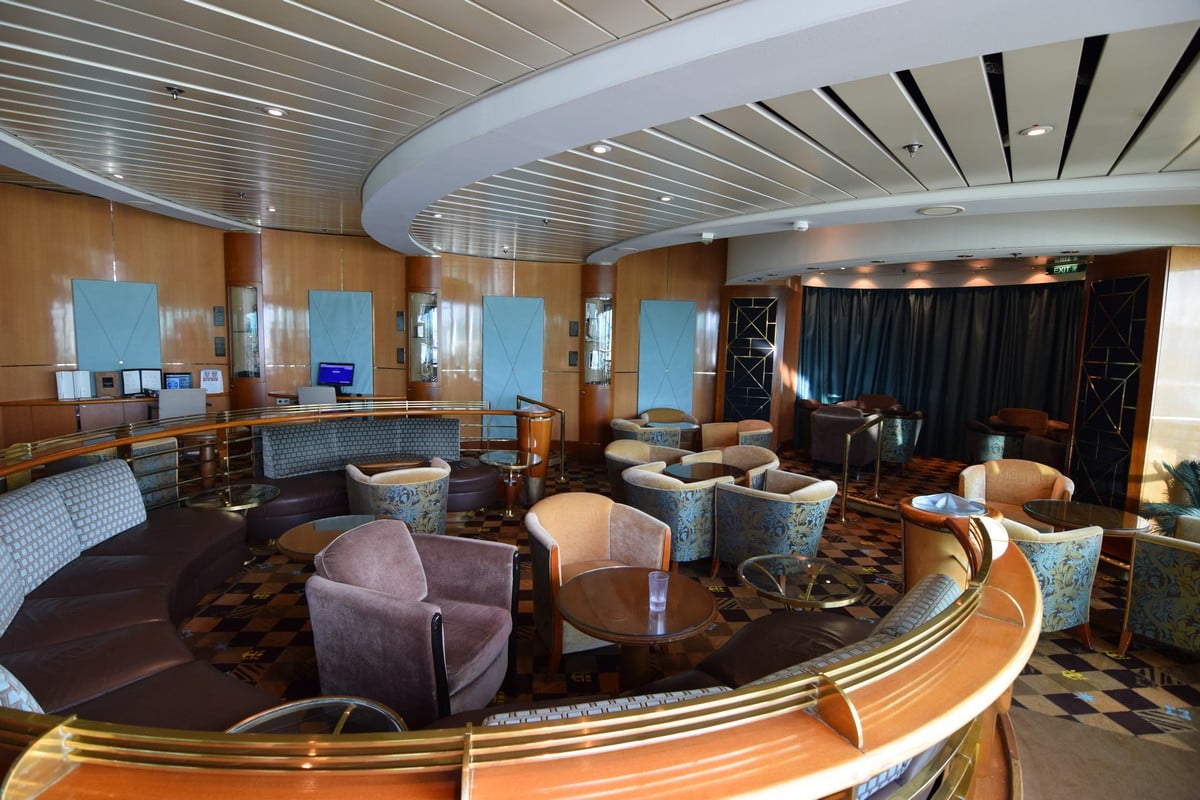
Junior Suite
- Royal Caribbean Bathrobe
- Luxury Bathroom Amenities
- Lavazza Espresso Coffee Machine
- Priority Boarding
Grand Suite, Ocean View/Panoramic Suite & Owner's Suite
- Royal Caribbean Bathrobe
- Luxury Bathroom Amenities
- Lavazza Espresso Coffee Machine
- Priority Boarding
- Pillowtop Mattress
- Priority Departure
- Concierge Service
- Suite Lounge/Concierge Club Access
- Priority Dining Reservations
- Priority Spa Bookings
- Priority Shore Excursion Ticketing
- Suite Party Invitation (On Itineraries of 5+ Nights)
- Bridge, Galley & Backstage Tours
- VIP Pool Deck Seating (Voyager Class and Above)
- Priority Tendering
- Welcome Evian & Fruit Amenity
- Main Dining Menu Available for In-suite Dining (During Operating Hours)
- Complimentary 24-Hour Room Service
- Private Lunch Seating Available on Ships without Coastal Kitchen
- Private Breakfast Seating Available on Ships without Coastal Kitchen
- Departure Breakfast
- Reserved Section in Theater
- Complimentary Pressing on First Formal Night
- Sign-up Fee Waived for Luggage Valet Service
Royal Suite & Villa Suite
- Royal Caribbean Bathrobe
- Luxury Bathroom Amenities
- Lavazza Espresso Coffee Machine
- Priority Boarding
- Pillowtop Mattress
- Priority Departure
- Concierge Service
- Suite Lounge/Concierge Club Access
- Priority Dining Reservations
- Priority Spa Bookings
- Priority Shore Excursion Ticketing
- Suite Party Invitation (On Itineraries of 5+ Nights)
- Bridge, Galley & Backstage Tours
- VIP Pool Deck Seating (Voyager Class and Above)
- Priority Tendering
- Welcome Evian & Fruit Amenity
- Main Dining Menu Available for In-suite Dining (During Operating Hours)
- Complimentary 24-Hour Room Service
- Private Lunch Seating Available on Ships without Coastal Kitchen
- Private Breakfast Seating Available on Ships without Coastal Kitchen
- Departure Breakfast
- Reserved Section in Theater
- Complimentary Pressing on First Formal Night
- Sign-up Fee Waived for Luggage Valet Service
- Officer Escort Onboard from Terminal at Check-In
- Welcome Moet & Chandon
Suite Concierge
Perhaps the most important person to get to know on your cruise if you are booked in a suite is the suite concierge.
Think of the concierge as Guest Services dedicated exclusively to suite guests.
Most ships have one suite concierge, although Oasis Class ships have two.
Right around a week before your cruise, the Suite Concierge will email you to prepare you for your cruise and provide instructions on what to expect.
The concierge can provide several functions including (but not limited to):
- Specialty restaurant reservations
- Solving billing problems
- Book shore excursions
- Priority disembarkation
Read more: What is the difference between suite concierge and a Royal Genie?
Junior Suites
It's important to quickly mention that despite the name, junior suites do not enjoy the full suite benefits. This means no suite lounge access or concierge services.
Think of a junior suite as a "really large balcony room". They do get double points and on Oasis or Quantum Class ships, access to Coastal Kitchen for dinner, but that's about it.
Given that the price of a junior suite can sometimes be nominally more than a balcony room, many people book junior suites simply for the extra space or double points.
Icon of the Seas' Suite Neighborhood
Onboard Icon of the Seas, the world's largest cruise ship, you'll find a Suite Neighborhood that trumps all others in the fleet.
From The Grove Suite Sun Deck to the cruise line's first-ever two-story Coastal Kitchen restaurant, you might find it difficult to venture into other neighborhoods onboard!
The Grove overlooks the vibrant pool deck below, including Swim & Tonic, Royal Caribbean's first swim-up bar at sea. Plus, it's also home to a second suite-only dining option, The Grove, that features Mediterranean cuisine and al fresco seating.
Coastal Kitchen is the elegant suite-only dining room that's open for breakfast, lunch, and dinner and has views straight into the enclosed AquaTheater.
Note that these amenities are only available to those who book Sky and Star Class rooms. Those staying in standard Junior or Sunset Junior Suites cannot access The Grove, and Coastal Kitchen is only available to them for dinner, subject to availability.
Read more: Guide to Icon of the Seas cabins and suites
Which Royal Caribbean suite should I book?
Depending on the Royal Caribbean ship you book, there can be quite a few suite categories to choose from, which can make the decision of which suite to book complicated.
No matter which suite you consider, be sure to look at the layout and size of the room and balcony, as these can vary wildly.
Best values
If you're looking to splurge without breaking the bank, a junior suite can be the ticket.
Junior suites may not have all the benefits, but all that extra living space sure is nice to have, especially a full bathtub.
For couples that want to spread out a bit more, you can often find a junior suite at a reasonable price to move up to from a balcony.
First time in a suite
If you're ready to try out a suite, then you'll want to consider either the Grand Suite or Owner's Suite.
Both Grand Suites and Owners Suites are the lowest tier of suites that include full-suite benefits. They're usually a very large room that includes both a living space and bedroom. The bed is usually on one side, with the sitting area on the other side. Most of the time, there's some kind of a divider between.
Grand and Owners suites qualify for Sky Class in the Royal Suite Class and are otherwise full suites on the rest of the fleet. The concierge services, lounge access, and priority treatment given to guests here are what draw many people to book these cabins.
If you plan ahead, you can sometimes book one of these suites at a reasonable price. Suites will always cost more, but many families find these types of suites affordable, especially when you factor in the extra service you get with them.
Families wanting to spread out
If you have kids and want separation from them, there are a few suites on the higher end that offer multiple bedrooms in one cabin.
Royal Caribbean has a few "family suites" that are designed to handle 5-6 guests, and often have two bedrooms and two bathrooms.
On Oasis, Quantum, and Icon Class ships, you'll find loft suites, which are two-story cabins that have vaulted ceilings and floor-to-ceiling windows.
There are different types of Loft Suites:
- Oasis Class ships have Crown, Sky and Royal Loft Suites (in order from smallest to largest)
- Quantum Class ships have Sky, Grand, Owner's and Royal Loft Suites (in order from smallest to largest)
- Icon Class ships have Icon and Royal Loft Suites (in order from smallest to largest)
Crown Loft Suites are eligible for Sky Tier perks, while Royal Loft, Owner's Loft, Grand Loft, Icon Loft, and Sky Loft suites receive upgraded Star Tier perks.
If money is no object, then you can book the Ultimate Family Suite or Ultimate Family Townhouse.
Available on select Oasis, Quantum, and Icon Class ships, these giant suites are designed for kids and their parents.
You'll find not only multiple bedrooms, but also an in-suite slide, a huge TV, a suspended chair, LEGO wall, play area, and hot tub.
Onboard Icon Class ships, the three-story Ultimate Family Townhouse has a "backyard" that opens right up to the family-focused Surfside Neighborhood.
The photos don't do the room justice in terms of how much fun they packed into a single cabin, but the price tag may curb your enthusiasm.
The price for the Ultimate Family Suite begins at $30,000 for a 7-night cruise and prices usually go much higher from there.
The Ultimate Family Townhouse is much more expensive, averaging around $80,000 for one week.
Apartment style living
If you don't have kids in tow but still want lots of space for you and maybe a friend or two, then there are some rather large suites to consider.
The Royal Suite is a standard offering on pretty much all ships. They feel more like an apartment than a cruise ship cabin and are between 950 to almost 1,400 square feet in size.
Many even have a baby grand piano in the foyer, and usually have a hot tub on the balcony.
There are large bedrooms separated from the rest of the suite and enormous showers.
A Royal Suite is really great for someone who wants to spend a lot of time in their room and enjoy what the cabin offers. Many who book a Royal Suite prefer to have meals delivered to their cabin.
I'm on an Oasis Class ship and want an amazing balcony, what suite should I book?
If the idea of a giant balcony with amazing views is appealing to you, then you should consider an Aquatheater suite.
Aquatheater suites are their own type of experience because, unlike other suites, the attraction here is the views you have of the Aquatheater below.
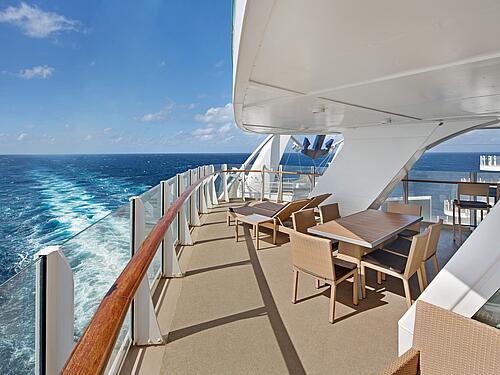
The cabin comes in either a one or two-bedroom configuration (with the two-bedroom qualifying for Star Class), but the real draw is the views.
The balcony wraps around the back half of the suite, which means you can have almost as much balcony space as you do living space inside. While at sea, you'll have views in almost every direction.
At night, you have the perfect seat for the Aquatheater performances below, without the hassle of getting a seat.
Is a Royal Caribbean suite worth it?
No matter how look at it, booking a suite is a splurge compared to lower categories of cruise ship cabins.
Similar to how first class on an airplane is a plusher experience than coach, staying in a suite provides lots of extras that are very nice to have access to while onboard.
It's rare to find a suite priced so low that the investment will pay for itself, so if you're considering a suite, look at it as purely a way to get more from your vacation because you can afford it.
Whether you are celebrating a special occasion, treating your family to something nice, or generally prefer the nicer things in life, a suite usually delivers an upgraded experience.
Three benefits truly stand out for booking a suite:
- Suite Lounge (and the complimentary beverages)
- Services of the concierge
- Priority embarkation/disembarkation
While there are many more benefits that you can take advantage of, these are the core perks that nearly everyone in a suite usually takes the most advantage of during their cruise.
Suites aren't cheap, but if you can afford one without putting a serious dent in your financial situation, it sure is a nice way to vacation.
Read more: Is a suite on Royal Caribbean worth it?
Speaking of not cheap, so many people want to know if Star Class is worth the high price just so they can have a Royal Genie.
When you have a genie, you don't have to plan anything on your own. The genie can arrange for pretty much anything you want to do onboard and it's an incredibly liberating experience. From bypassing the line for the FlowRider or laser tag to catered parties in your suite and priority elevator access, you will rarely have to wait for anything.
Just as with other suites, the question comes down to what you can afford. You could easily take the money you'd pay for a Star Class cabin and use it to pay for two or three sailings in a balcony cabin, but like Rolex watches, sports cars, and first class on airplanes, sometimes you just want the best there is and are willing to pay for it.
There's a cabin for just about everyone on a Royal Caribbean ship, so it all comes down to what your vacation budget looks like and how much you value the many perks a suite comes with.
More cruise advice





